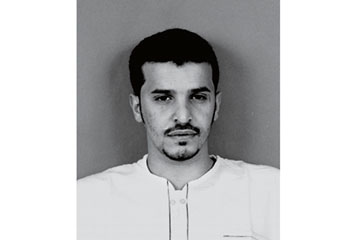
Saudi national Ibrahim al-Asiri has evolved into al-Qaeda's most inventive bombmaker.
(3 of 6)
Al-Asiri's radicalization became manifest at the onset of the war in Iraq. Abandoning university exams after the 2003 U.S. invasion of that country, he tried to join a militant anti-American group there, his family told Saudi media. Saudi officials arrested him on his way, and he served nine months in prison. That only further served to radicalize him, apparently. Al-Asiri later said in an al-Qaeda publication that while in prison, "I began to see the depths of [the Saudi] servitude to the Crusaders and their hatred for the true worshippers of God, from the way they interrogated me." On his release, al-Asiri tried to start his own jihadist cell to overthrow the Saud royal family. Police raided his hideout in 2006, killing six of his colleagues. That August, he and his brother Abdullah fled to Yemen.
There, al-Asiri joined a group of Yemeni and Saudi radicals intent on making war with the governments of both countries and on attacking the U.S. Some, like AQAP's deputy leader Saeed al-Shihri and a midlevel member, Jabir al-Fayfi, had been captured on the battlefields of Afghanistan and Pakistan in the months after 9/11 and taken to Guantánamo Bay. Al-Shihri and al-Fayfi were released to Saudi custody by the Bush Administration in 2006 and 2007 and put through a re-education program. Eventually the radical groups they and al-Asiri belonged to merged to form AQAP. In 2009, AQAP began to plan its first attack. Ibrahim and Abdullah al-Asiri were at the heart of it.
Al-Shihri decided to target the then Saudi deputy minister for security affairs, Prince Mohammed bin Naif, according to an interview al-Fayfi gave in late 2010 after he defected back to Saudi Arabia. Ibrahim made the bomb, al-Fayfi said, and it was here that al-Asiri's combination of skills first showed their true menace. Al-Asiri's training as a chemist made it easy for him to produce the primary explosive, PETN: recipes are widely available on the Internet, and the raw materials are not difficult to buy. But al-Asiri's imagination and ruthlessness were what made his bomb truly dangerous. With no metal parts and hidden in the bomber's underpants, it would be nearly undetectable by conventional scanners. Worn by his younger brother Abdullah, it would be assured delivery.
At al-Shihri's bidding, Abdullah arranged to meet face to face with Prince Mohammed on the pretense that the younger al-Asiri wanted to defect. The prince flew him on his personal jet from Yemen to Saudi Arabia for the meeting. When Abdullah entered the room and approached the prince, he triggered his brother's bomb and blew himself literally to bits. But his body absorbed most of the blast, and the prince was only slightly wounded.
Strike, Counterstrike
Within Days of the attempt, U.S. counterterrorism adviser John Brennan flew to Saudi Arabia to consult with Prince Mohammed and to learn about the new kind of bomb that had been used. At first it was thought Ibrahim had concealed the bomb inside his brother's body, but U.S. and Saudi intelligence now believe it was the first version of the underwear bomb.
